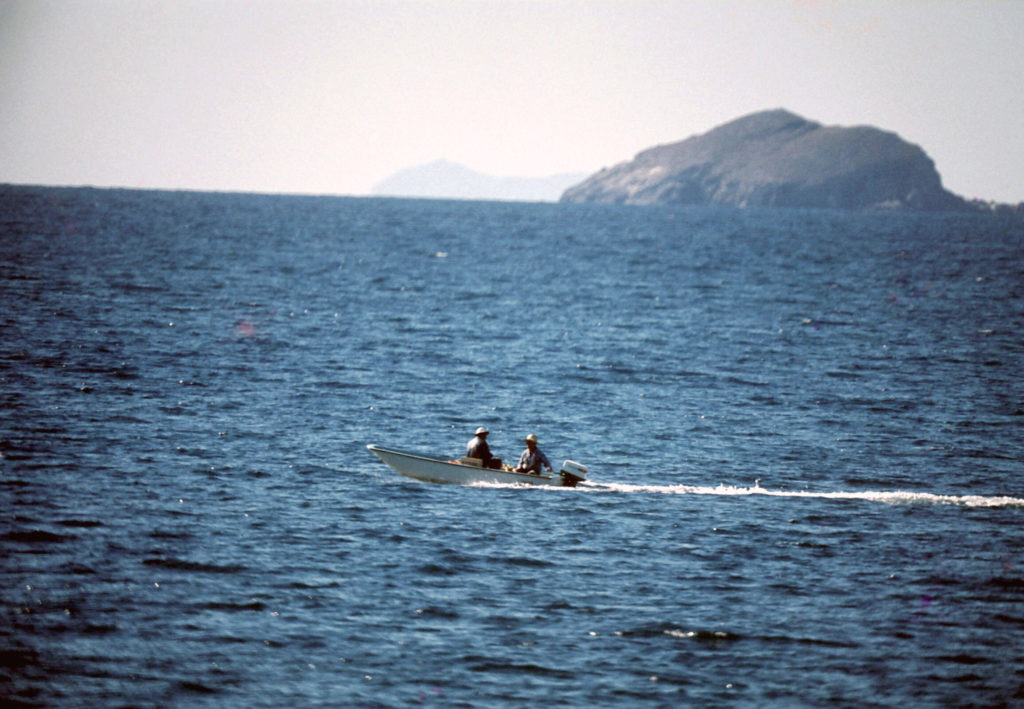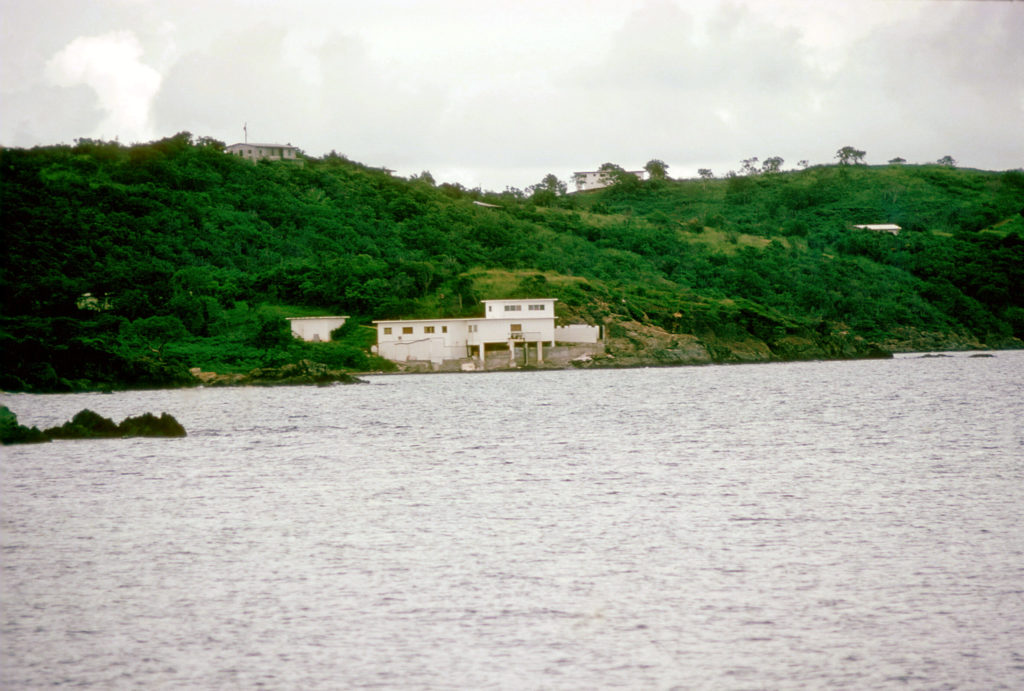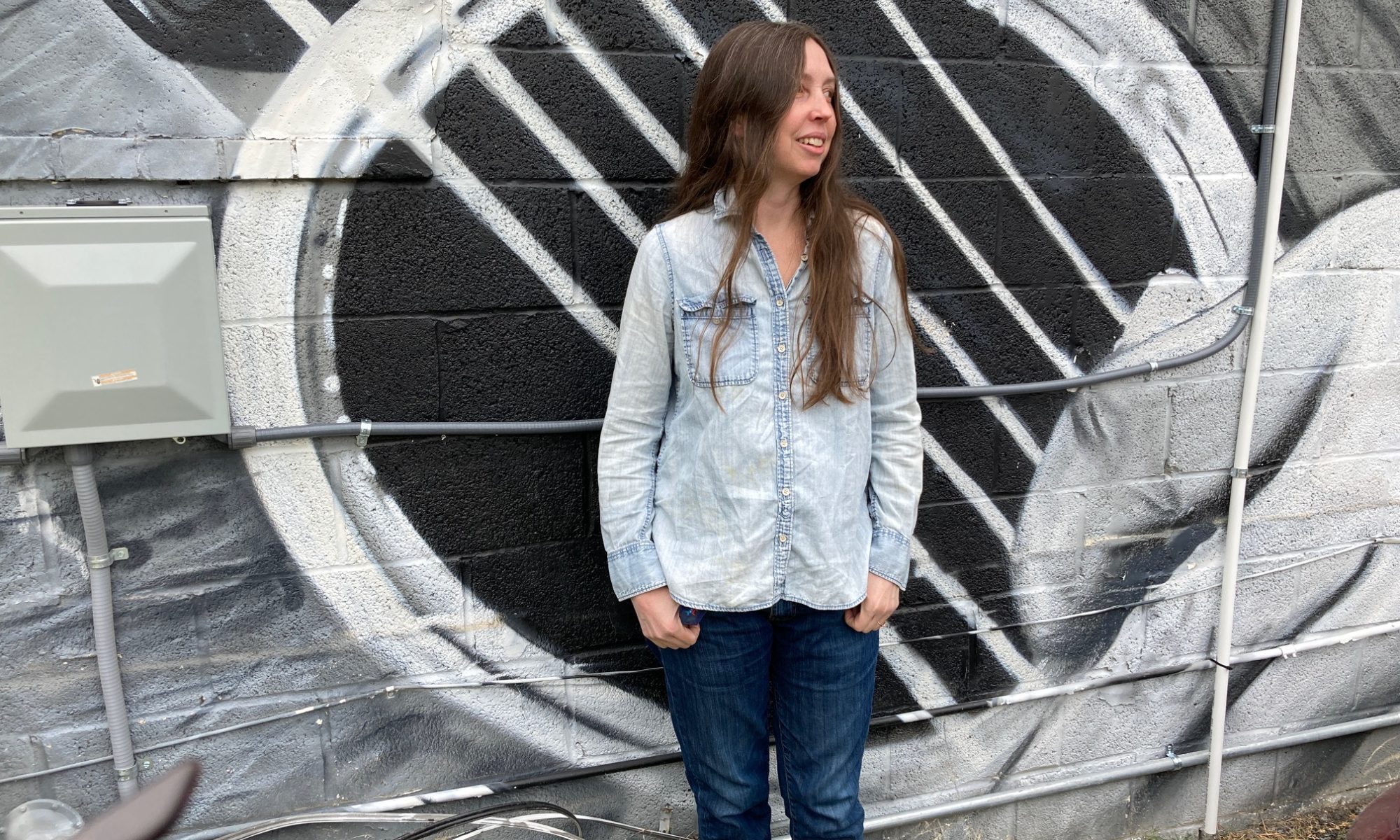While we also interviewed Connie Lovatt in our 2022 issue of chickfactor (19), we interviewed her again just about Coconut Mirror, out Sept. 27 on our label, Enchanté Records (based in the U.S., not the one in Paris, France). Also read about the dream team who plays on it. Interview: Gail O’Hara

chickfactor: When did you start making Coconut Mirror? Talk us through the timeline.
Connie Lovatt: When [my daughter] Hartley was around 1, we needed to get help with childcare. We didn’t have family in Los Angeles and both our moms had been so generous with their time, traveling out to care for Harts as we adjusted into being parents. But as she got older, I needed to get some structured help so I could take a break during the day. Her name was Diana, and she was incredible. Later Lucy [LaForge] took over and was amazing with Harts, too. During my breaks I discovered I didn’t even like to go anywhere in LA. I started to hang out in my garage and read and work on songs. I didn’t play guitar because the sound would tip off Harts that I was somewhere in the house, so I didn’t do anything with an instrument. I started making up melodies with some phrases. After a few months doing that off and on, I had 11 solid song ideas.

That was 10 years ago.
So this was 2013. You can get into something for a little bit and then your kid gets sick and takes you out of it, or something happens, and I would put it away for a very long time. And years would go by, where like off on, off on, I gathered up melodies for each song. And then maybe three or four years ago (2019-2020), it was time to put chords to the melodies and see if the songs were indeed real. That’s kind of hard to do when you start with a vocal melody, to find the right chords and the flow. It was hard for me I mean, learning how to put chords to melodies that already existed because I’m not a great guitar player. And once I got that done, it took a couple years to figure out the directions of stuff. It was the first time I wanted every song to hold a sense of clear narration. I kept working on words all the time, and then when the pandemic hit, at some point, I would send lyrics to Bill [Callahan] and I’d say, “How’s this looking?” One day he gave the thumbs up, and I was galvanized!
Seven months after the pandemic started, we went to New Zealand. Ravi [my husband] got me this little digital four-track and I took it with me. We were there for six months, but two months before we were set to leave, I got it in my head that I had to get these down. I’d been sick for months with odd symptoms with what was eventually diagnosed as long COVID. We’d moved halfway across the world, and I wanted something to show for all this lost time. And it was time for me to face reality, to see how they sounded recorded. We were living in this pretty wood house right on the ocean. The weather in Wellington is extremely moody and beautiful. Almost every walk was challenging and wonderful. Every moment sheltered in the house was good. So, I started doing it, closing my bedroom door, and putting down the guitars and vocals. After months of being sick without any answers, it was incredible for me to hold in my hands something I’d made. It seemed impossible.

When we got back to Los Angeles, I found an engineer. He was a dad friend from our school. I’ve known him from the dozens of school events we went to with our daughters, and he was always helping with sound, at recitals or school plays etc. He’d been an engineer on tons of records from Veruca Salt to Barbara Streisand. His name is Joe Wohlmuth. So, I brought him all my files and I told him I wanted to work off these. I told him something magical happened in New Zealand and that my hands and vocals aren’t the best because of all these neuropathy issues but I want to build on what we have here. Then it took a little while longer to get other players. I was lucky enough to have beautiful Jim White secured but needed to wait for a break in his on-the-go schedule. Once we added Jim’s drums, I was able to send it to killers like James (McNew) and Rebecca (Cole) and Che (Chen) and slowly start building up everyone else’s tracks. Another person that helped me to build up confidence in these songs was Phoebe Gittins. She’s amazing and has an equally amazing mom, Philippa. Philippa was instrumental in helping us find the house we stayed in while in New Zealand, and she lived a couple houses down the road. She was the bestest next-door neighbor anyone could ask for. Her husband, Seth, had an acoustic guitar he generously lent to me while there. It sounds great and is mostly what I play on the record. When I met Phoebe, I learned she was a self-taught piano player. There was this piano in the house we were staying in and I had a couple songs down and I asked her to come by and put on headphones and play along to it and she sounded so beautiful. I kept those tracks, and they are on the album. She did so beautifully on those songs that when I eventually got back to LA, I sent her a couple more songs to work on. My friend Max Tepper lived close to us in Los Angeles, and I asked him to do some synthesizer stuff and he kindly wrote and handed over all sorts of cool sounds to work with. All the instruments, except for Lucy’s harmonica, were sent remotely. Joe and I would sit down and comp them in as they arrived and place them where we wanted, do little edits, and move things here or there to perfect the things we wanted. Then I re-sang everything except for some backing vocals that I kept from the New Zealand recordings. We rerecorded 3 guitar tracks, too.

You recorded this album next to the ocean. It’s hilarious that you went to New Zealand and made a Laurel Canyon record even though you were living in L.A.
I didn’t know how it would all come together till New Zealand. Everyone that I’ve loved is in this record. Everyone that matters, women, men, they’re all in there somewhere. I wanted to show Hartley that after giving birth, that I could still make something. I wanted to make a record with acoustic guitar where I’m telling my daughter all the stories that mattered to me. My first few years in California, I listened to a lot of Neil Young and Judee Sill and some Stevie Nicks demos and Sandy Denny. I wanted their voices in my head as I got to know California. All the songs I had written with Fontaine [Toups] and Ed [Baluyut] (in Containe and the Pacific Ocean) were written so fast. They were immediate. I knew I was going to spend a lot of time on this. That I wanted to be certain of every word and note and it wasn’t rushed during the fun of hanging out with friends and trying to learn how to play or how to be in a band. I worked way, way faster then. Everything I did with people that was collaborative, the pace of that was not nearly as careful as I was now attempting. I’d never spent this much time writing one song, much less 11.

So, the recordings you made in New Zealand are these songs and you built on top of them, basically subtracting and adding after you got back.
Yes. Almost all the acoustic guitar, lots of the backing vocals and a few of Phoebe’s piano tracks, all came from the work done on that little 4-track in New Zealand.
Who else plays on the record?
Lucy, who helped us take care of Hartley in the beginning, she writes and performs and is a strong singer. She plays all sorts of instruments. She’s one of those people that can play a million things. So, she came in and did harmonica and some backing vocals on “Sisters.” James Baluyut plays pedal steel on “Sisters.” And I think that’s everybody. Yeah. Phoebe, James [McNew], Jim [White], the other James [Baluyut], Lucy, Max, Rebecca [Cole], and Che [Chen]. And Hartley’s screams of joy as she played video games with friends a world away are heard in the background on a couple songs.

Bill Callahan produced one of your previous albums (The Pacific Ocean’s So Beautiful and Cheap and Warm). You’ve known each other since then, right (2002)?
Yeah. And then I played bass on his album A River Ain’t Too Much To Love.
Would you say that Bill was a consultant?
He was a loyal champion. He would check in and ask how the songs were going. Just by being interested, he gave me strength. He knows what I’m trying to do or trying not to do. No matter if I’m successful in my attempts or not, he’s kind and honest so the courage to work on remains no matter the feedback. I’m lucky to have him there telling me, “This is working. This could be better.” Everyone should have Bill as a friend. The end of “Kid” is now perfect due to him.

What else informed the record and its process?
Motherhood. Wifehood. My life changed course. I hadn’t touched an instrument for a couple years. When I started working on the melodies that would eventuality became the songs, I felt excited. I had so many happy moments playing in bands. I got curious if I could be happy trying this on my own. If the joys would still be there with just me in the room. I got really into it when I solved problems or things sort of elevated. I couldn’t quit caring about it. I wanted to finish this letter to my daughter, which is what it was becoming the more it came into view. You can’t give up on a letter to your kid! Sometimes I wish it hadn’t taken so long, that all those stops and starts and long gaps between stabs at the work hadn’t happened. But I was a different person in ways, compared to when I started, when I finally recorded it all. I’d became a bit of a perfectionist in that I no longer regarded impatience as a valid motivator to wrap it up. It had its own timeframe in my life and I was along for the ride. I finished when I finished and it felt good.

Learn more about Connie’s previous bands here:
Containe Oral History
The Pacific Ocean Oral History
Listen to Coconut Mirror and other releases here. The album will be out Sept. 27 on select digital platforms and CD (via Bandcamp).

